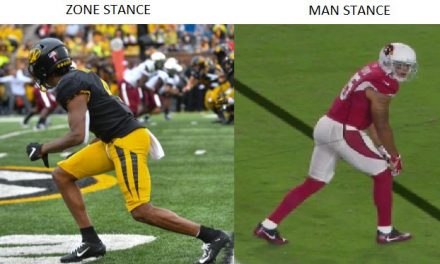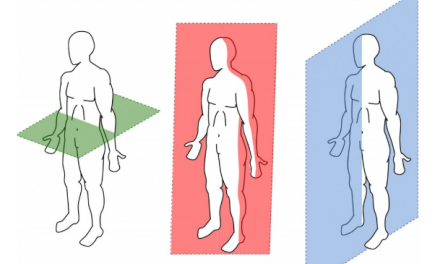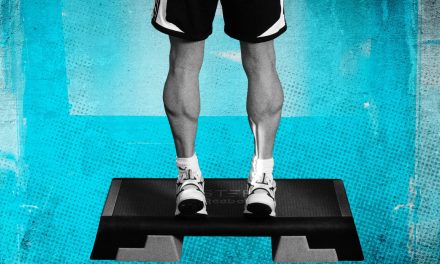Please consider reading the following article before reading further: Training The Nervous System To Recruit Muscle Fibers
Grip strength is one of the best exercises for football players because it translates to the field in so many ways.
Grip strength is also very important because on some exercises, we are only as strong as our grip.
We all know this because lifting straps were created because the legs and arms can lift more weight than we can actually hold.
Another very interesting thing about grip strength is it is one of the biggest predictors of health.
The weaker the grip strength the higher the death rate is.
When I saw that statistic I was blown away and I started doing Farmer’s Walks a lot more after that.
When training there should be an emphasis on making the motor neurons have to respond to new stimuli so they can create new motor neuron memory (muscle memory).
If programming constantly does the same sets and reps, in the same order, and always from the same positioning, the body will not learn how to be more athletic because the motor neurons will not learn.
We all fall into some training ruts so here are a couple of easy ways to adjust the grips of your current exercises to make them more functional and sport-specific while also training the motor neurons.
DOUBLE GRIPS
Double grips are the traditional grips where the hands are both in the same position.
When using dumbbells and machines, athletes should use all three grips (see picture above) to maximize performance.
Most athletes only use Overhand Grip because that is the traditional barbell grip but sports are played with a variety of wrist positions.
I never know how my players will contact another player or the ground so I want their body to have the motor neuron memory to be comfortable in every body position.
If just one grip is always used, the body will not know what to do when it is put in a position that it has never been taught how to explosively move through or how to decelerate from.
On top of that, using different grips will modify the stress that each muscle group will encounter so the motor unit activity will be different.
In the above pictures, Overhand Grip allows for a bigger stretch in the upper part of the chest and puts more emphasis on the chest and shoulders than the triceps.
For Underhand Grip, the biceps and the lower half of the chest are more engaged because of the positioning of the hands.
In Neutral Grip, the chest and shoulders do not get engaged as much and the triceps have to carry more of the load.
All three grips can be used for different athletes to help them towards their on-field goals.
It is important to remember that the goal of strength training is to get better on the field more than it is to get better in the weight room.
While most programs only use Overhand Grip during the off-season, football players almost exclusively use Neutral Grip on the field.
We tell our players to strike with their “thumbs up” (Neutral Grip) and we never teach them to strike someone with their “thumbs in” (Overhand Grip).
Even though almost everyone can Dumbbell Bench more with Overhand Grip instead of Neutral Grip, the on-the-field translation is much better with Neutral Grip.
I also like Neutral Grip to protect my athlete’s shoulders because it decreases the amount of pressure that goes through the shoulder joint.
I use this grip more often during the season because our athletes’ shoulders get beat up just like every other football program.
Neutral Grip is most important for quarterbacks who are constantly throwing so they need to be treated a lot like baseball pitchers.
This is a quick and easy way to protect the range of motion of the shoulders because it keeps the elbows in the framework of the body.
The reason why this works is because when the hands are in Neutral Grip it mimics the motion of Close Grip Bench and makes the triceps work more.
If the hands are in Neutral Grip, it is much harder to get to the stretch reflex between the chest and the shoulder even if they take the dumbbells all the way down to their chest.
To also remedy the shoulder stress, you can have your quarterbacks do Floor Bench or Dumbbell Floor Bench.
When pushing weight above the head (like in Shoulder Press) Neutral Grip will also help alleviate some shoulder stress.
There are also some exercises that are much easier to do correctly with Neutral Grip.
Shrugs are much easier in Neutral Grip because when the hands go in front of the body the shoulders have a tendency to roll forward.
That is a problem because when Shrugs are done correctly, the shoulders are pulled up and back. An easy way to check if your athletes are doing Shrugs correctly or not is to check their Traps.
If the Traps look long, they are doing them wrong. If they ball up like in the picture below, they are performing them correctly.
Deadlift Grip
Out of all exercises, I believe that Neutral Grip is the biggest helper for Deadlift.
Ultimately, the Hex Bar is better for Deadlift because it allows the elbows to roll backwards since the hands are not in front of the body and are in Neutral Grip.
When the elbows roll backwards the shoulder blades can be positioned down and back which keeps the chest wide and tall and does not allow for the shoulders to roll forward.
Even though Neutral Grip is very important, we also need to work on Underhand Grip to simulate on-field movements.
I never know how a defender’s wrists will be positioned when tackling, trying to cause fumbles, or when trying to come down with a jump ball.
One of the negatives of this grip is it puts a lot of added stress through the bicep and could cause injury.
Grip for Tire Flips
When I watch most athletes do tire flips I get nervous because they almost always use Underhand Grip and then basically curl the tire.
That is very dangerous because the tire is so heavy and there is too much pressure being put through the biceps. They should actually grip the tire so they are as close to Neutral Grip as possible.
Some of the exercises you can do with underhand grip are Barbell/Dumbbell/Machine Row, Chin-Ups, Dumbbell Bench, and Barbell/Dumbbell/Machine Curls.
I know it seems that I am arguing against Overhand Grip but that is not true at all.
There are some exercises where Overhand Grip is the best grip.
Exercises like Barbell Bench, Barbell RDL, Barbell Front Squat, Upright Row, Skull Crushers, Reverse Curls, Power or Hang Cleans, Snatch, and KettleBell Swings are just a couple of the exercises that require the Overhand Grip.
In terms of sports, Overhand Grip is not used as much as Neutral Grip so why do we do it?
We use Overhand Grip for the exercises above because they help build strength and allow the body to position itself to work certain muscle groups with higher amounts of weight.
Sometimes the point of an exercise is not to improve the grip so the grip just helps facilitate the goals of that exercise.
ALTERNATING GRIP
Many of my athletes try to use Alternating Grip where one hand is overhand and one hand is underhand.
The advantage of this grip is it is easier to hold a heavy bar and that is why most powerlifters use this grip.
My athletes normally try to use this grip for exercises like DeadLift, Shrugs, or any other extremely heavy lift.
One of the negatives of this hold is it could cause asymmetries.
This can be alleviated if the athlete flips their hands each set but in my experience all athletes have a tendency to naturally have the same hand be the overhand and the same hand be the underhand.
All humans fall into these patterns just like we always cross our arms with one particular arm over the other.
Another potential problem of Alternating Grip is it causes a slight lean to one side or the other which will put asymmetric pressure through the shoulders, lower back, and hips.
Even though I have been discussing the applications to football it is sometimes good to think through general athletic movements and how it applies to other sports.
In training hockey or lacrosse athletes, using Alternating Grip is very important because when they check someone with their hands on their stick, one hand is overhand and one hand is underhand.
While shooting a slapshot, the bottom hand pushes forward with Underhand Grip while the top hand pulls with Overhand Grip.
With hockey and lacrosse players, it would make complete sense to even do exercises like Barbell Bench and Barbell Bent Row with Alternating Grip.
Baseball players use an alternating grip while bunting but while fielding ground balls, the players are constantly in an Underhand Grip position.
It is important to look through all of your athlete’s movement requirements to decide what needs to be trained.
GRIP WIDTH
Besides using the four grips above, grip width can also vary exercises. Below is a picture of different grips for Deadlift and some of the pros and cons for each grip.
The “Outside The Thigh” grip is the traditional grip because it is the most natural way to grip the bar.
I like it because it allows me to position my shoulders down and back which is vitally important for Deadlift.
The scariest part of Deadlift is that the beginning of the movement is the most dangerous part of the exercise so injury risk is very high.
If you make a wrong movement at the beginning of Squat, you are at the easiest part of the exercise so the chance of injury is low but that is not true for Deadlift.
The grip and body posture has to be just right to set up a correct first initial movement.
The “Inside The Thigh” grip is necessary if an athlete is doing Sumo Deadlift or any other exercise where the feet are wide.
The potential problem with a narrower grip is it is hard to keep the shoulder blades down and back to ensure proper posture.
The more narrow the grip the more of a tendency there is to round the back since the shoulders naturally roll forward.
If an athlete has poor flexibility, a more narrow grip could be more advantageous on ground-based movements.
The advantage to “Wide Grip” or “Snatch Grip” is it allows an athlete to get lower on Deadlift or any other ground-based exercise.
The “Wide Grip” also engages the lats because the wider the hands get, the more the lats are engaged.
This applies to Pull-ups also because the wider the hands are, the more the outer muscles of the back are engaged.
Another advantage is this grip allows for the shoulders to get pulled down and back and this is the same reason why it is easier to pinch the scapulas when doing Bent Flies compared to Bent Rows.
The exercise that I see Wide Grip applied to the most is on Bench Press.
The advantage is the bar has to travel a shorter distance but it is very harmful to the shoulders.
The Wide Grip Bench causes too much strain through the stretch reflex between the chest and the shoulder and puts too much pressure through the socket.
It is not a coincidence that almost all powerlifters use this grip on Bench to lift heavier weights but then eventually all have to get shoulder surgery.
It is hard to try to get athletes to perform movements in the safest way possible since some of their improper technique is helping them currently lift heavier weights.
HOOK GRIP
When it comes to lifting heavy weights on exercises like Deadlift, Shrugs, or doing Dumbbell Farmer’s Carries, Hook Grip is helpful because we are only as strong as our thumbs can squeeze.
In this grip, the thumb is underneath the fingers instead of the thumb on top of the fingers.
This allows for a better grip but the negative is it puts so much pressure on the thumb that it can be very uncomfortable and even hurt.
The picture below shows this grip and make sure that you do not put too much of your thumb underneath your fingers. Just the top half of the thumb should be covered.
GRIP FOR BODYWEIGHT EXERCISES
When not holding any weight my athletes always use a grip called “Golfer’s Grip”. I learned this from a posture expert named Doug Stebbins.
I use this on bodyweight exercises like Ys, Ts, As, Ws, Is, Bent Flies, etc.
If the fingers are spread apart, the muscles in the forearm, biceps, triceps, and shoulders are not engaged but in this grip they are.
To feel this sensation, let your arm hang in the anatomically correct position with your fingers spread.
While they are spread, feel the engagement of your arm and shoulder and there should not be much engagement.
Now squeeze your fingers into “Golfer’s Grip” and you will feel the muscles in the forearm, bicep, tricep, and shoulder activate.
Now let your fingers spread back apart and you will feel the muscles disengage.
When lifting weights the same motor unit reaction will occur if you squeeze the bar or dumbbell very hard so remind your athletes to always squeeze as hard as possible.
If we are going to make a mistake during the off-season, we should cause too many motor units to be used so grip intensity will matter.
PLATE GRIPS
If you want to just work on sheer grip strength, one of the best ways is to not use barbells, dumbbells, or kettlebells.
The hardest grip is holding the top of a plate while doing Farmer’s Carries, Suitcase Carries, etc.
When your athletes pick up their plate with one hand, they will naturally put the lip of the plate facing out (the smooth side will point towards them) so their fingers can hold underneath the lip.
That is difficult to hold for long durations because all of the pressure goes through the fingers since the palm of the hand is not able to help.
To make that harder, have the athletes flip the plate around so their fingers are on the smooth side.
This makes the exercise difficult to hold for a long duration even if they are just holding 25 lbs.
The exercise gets even more difficult if you have perfectly cylindrical rubber plates because the fingers and the thumbs do not have a lip to grasp with.
I would not use a metal plate with handles unless you have beginners.
The highest level of these exercises is to use two plates where you have to squeeze them together with one hand.
The absolute highest level is to try to squeeze two plates together where the fingers and the thumbs are both on the smooth sides.
SUMMARY & APPLICATION
- All of these grips have a place in strength training and some are more advantageous in certain situations. We should teach our athletes the tools they need and then let them use what is applicable for each lift.
- If it is possible, do exercises with different hand grips. When my athletes do Bent Flies I write down “3 Way Bent Flies” so they know to change their hand position each set. They will do the three double grips shown above but sometimes it makes more sense to do “2 Way” exercises where they pick two different hand positions. Barbell Bent Row is an exercise that is a “2 Way” exercise.
- Use Golfer’s Grip for bodyweight exercises to create maximum motor unit activity.
- Have the athletes squeeze the bar or dumbbells as hard as they can to engage more motor units.
- Teach the athletes to use traditionals grips and Hook Grip and then let them choose what they want to use.
- Do not use Alternating Grip unless you have to. If an athlete does use it, be mindful of them switching their hands on each set.
- If you want to alleviate shoulder stress, use Neutral Grip on pushing exercises.
- Grips can be adjusted for each athlete to help them target certain muscles, disengage certain muscles, or for proper posture.
- Use plates in a variety of ways to increase finger strength.
- If you want to engage the Lats, use a wider grip.
- People ask what I think about different grips but I really do not know how to answer them until they tell me what their goals, experience level, or strength level is.
If you are interested in learning more you can go to the resources page on my website (https://exceleratead.com/training-theory) to find my FREE and moderately priced CoachTube Courses, Coaches Choice Videos, and a variety of other training articles and resources. My contact information is on my website so please feel free to email me with any questions.





